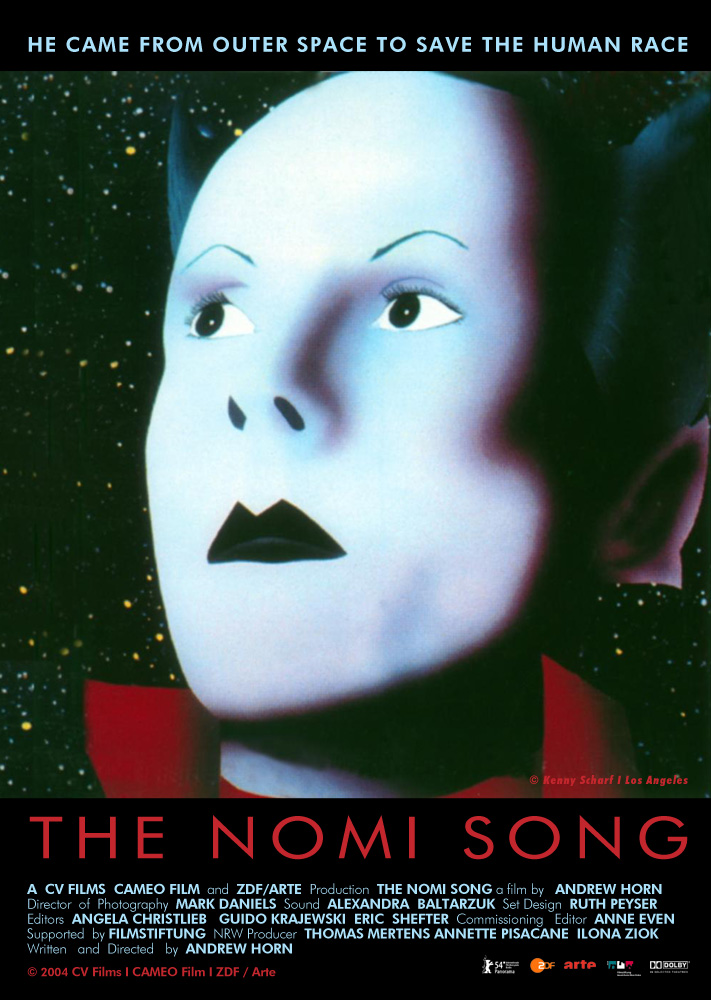The
Nomi Song
The
TEDDY 2004 for Best Documentary goes to THE NOMI SONG by Andrew Horn
"For
its remarkable depiction of a queer pop icon’s life and his substantial influence
on the Zeitgeist."
TEDDY
2004 The nine members of this international jury – organizers of queer and other
film festivals
or gay/lesbian filmmakers – view all the films in the Berlinale
which have a queer context.
The jury awards a TEDDY for Best Feature Film,
one for Best Short Film and one for Best Documentary/Essay,
each of which
is endowed with 3,000 euros.
The members of the jury are: Ido Abram (Jury
President, Netherlands), Suzy Capo (Brazil),
Zvonimir Dobrovic, (Croatia),
Matthew Fox (Great Britain), Lan Hirche (Germany), Dario Lopez (Spain),
Kirsten
Schaffer (USA), Philippe Reilhac (France) and Natasha Mendonca (India)

"THE
NOMI SONG" Germany 2003, 96 min
written and directed by Andrew Horn
Producer: Ilona Ziok, Annette Pisacane, Thomas Mertens,
Manuel Göttsching
CV Films in co-production with TV Ventures, Cameo-Film
and ZDF/ARTE supported
by Filmstiftung NRW
THE NOMI SONG It’s hard to say which made a greater impression – his voice
or the way he looked
with his luminously painted white face? Klaus Nomi’s
countertenor register and his outrageous outfits –
greatly admired by David
Bowie, for whom he later designed costumes – soon made him an icon of New York’s
underground scene. By the 1970s, he was an integral part of New York’s alternative
culture, appearing in films,
performing in clubs and making countless records.
Nomi’s stage show oscillated between his own particular
interpretations of
Saint-Saëns “Samson and Delilah”, the Donna Summer hit “I Feel Love” and
Chubby
Checker’s “The Twist”.
When he died in 1983 from an AIDS-related infection,
he was by no means at the height of his popularity.
Whether one encounters
him on posthumous CD releases or commercials for “Jägermeister” bitters
–
Klaus Nomi is as much in the public eye today as he was during his lifetime. In
his documentary, Andrew Horn
tells the story of Klaus Nomi from his birth
as Klaus Spender in Bavaria in 1944 to his later stardom in New York.
The
film includes excerpts from Nomi’s shows but also features interviews with his
relatives, his former singing
teacher and his many friends and colleagues.
Klaus Nomi himself is even in on the proceedings
– in the shape of a life-size
mechanical doll created by the artist Pat Keck."
this
was taken from the website: www.berlinale.de (thank you)
Der
Stummfilmpianist 2004 
 MG @ Cannes
2004
MG @ Cannes
2004

